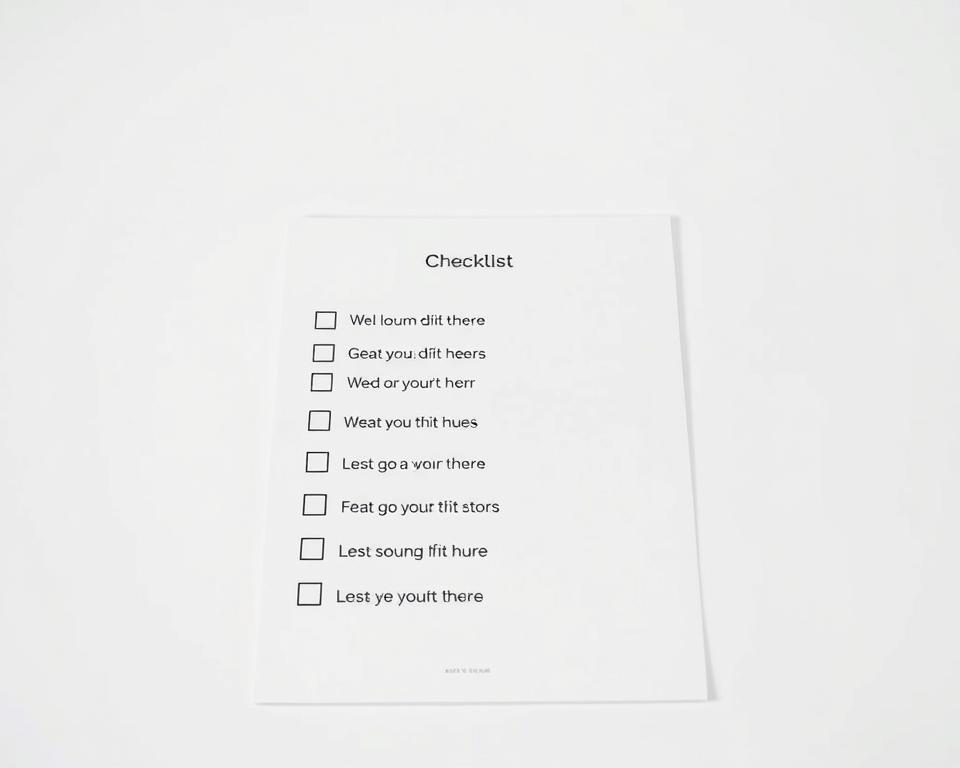Anúncios
Branding 2025 opens a practical view of why you need to act now.
Did you ever wonder how AI chats and social discovery are changing the way a brand finds its people? Recent data shows generative AI boosts personalized content impact—75% of consumers say they’re more likely to buy when content feels personal.
In plain terms, your marketing plays out across AI, social, and product touchpoints. Multi-sensory cues matter: 84% of people buy from brands they feel connected to, and 63% want richer sensory experiences.
This section gives you a short map of where branding sits today, why consumer behavior is shifting, and which small, measurable tests you can run. We reference real shifts from Google and OpenAI to show how subtle tech moves signal bigger direction changes.
Expect clear metrics for brand health, loyalty, and creative effectiveness, plus guidance on ethical, data-led iteration so you can learn fast without overpromising results.
Anúncios
Introduction: Branding 2025 context, why it matters now
The way people discover products has splintered across AI helpers, niche communities, and social feeds. This fragmented world means you must stretch your presence beyond traditional search and into chat, social search, and interest-based spaces.
Your strategy should balance reach with respect. Customers expect personalized, context-aware content while still valuing privacy and clarity. Use data responsibly and make privacy a visible part of your work.
Stand out by keeping your positioning clear and storytelling focused. Consistent identity, simple creative work, and honest sustainability claims help you cut through a crowded market and win real loyalty.
Anúncios
- Design for where people actually spend time: AI chats, community hubs, and social feeds.
- Make authenticity the baseline: relatable imagery and humor that match real use cases.
- Measure what matters and involve cross-functional teams so content, product, and strategy align.
Think of trends as input, not instruction. Test fast, measure, and iterate to protect long-term equity while you adapt to a changing world.
Branding 2025: metrics that matter and how to track them
Good brand measurement begins with simple, repeatable tests you can run fast. Start small, run A/B pilots, and use consistent baselines so results stack over time.
Brand health and recognition
Measure aided and unaided awareness with short surveys to panels you can repeat quarterly. Add distinctiveness tests that compare logo, colors, and visuals to competitors.
Tip: keep questions identical each wave so recognition shifts are real, not noise.
Experience and retention
Track repeat purchase, churn, and community engagement. Segment by customers versus broader consumer audiences to see where loyalty grows.
Use consented data to measure personalization lift: compare conversion and engagement deltas between generic and personalized journeys. Deloitte shows personalized content drives higher likelihood to buy, so treat this as a testable hypothesis.
Creative effectiveness and visibility
Benchmark assets with and without motion or sonic cues for attention and recall. Measure emotional response where possible.
Monitor mentions and visibility across AI chats, TikTok search, and Roblox spaces—not just search engines. Track reach, in-platform discovery, and referral paths.
- Tools: brand tracking surveys, creative pre-tests, UGC sentiment, and privacy-safe attribution.
- Report to companies with clear, comparable KPIs over time so marketing decisions tie to recall, recognition, and engagement.
| Metric | How to measure | Quick benchmark |
|---|---|---|
| Aided awareness | Panel survey, quarterly | Track % change vs. baseline |
| Personalization lift | Controlled A/B test, consented data | Compare conversion delta |
| Creative recall | Pre/post exposure tests | Measure name or logo recall |
Technology trends shaping brands in 2025
Smart glasses, voice agents, and generative systems are rewriting how customers expect to interact with your brand. You should plan small experiments that test usefulness, consent, and clarity before wider rollouts.
Generative AI and personalization: practical use cases and safeguards
Use generative models for dynamic messaging, creative versioning, and service chat triage. Pair each use with human QA, escalation paths, and bias checks.
Safe personalization workflow:
- Consent-first data collection and minimal retention.
- Model transparency and clear content guardrails.
- Bias reviews tied to your company values and an audit trail.
Multimodal agents and wearables
Multimodal agents can read context from phones and on-face devices. This shifts channel planning: think ambient prompts, short answers, and low-friction follow-ups.
Brand discovery is changing
You must format assets for direct answers and short-form video. Younger people find brands via AI chats and social search, so test concise content and labeled synthetic elements.
| Use case | Safeguard | Quick test |
|---|---|---|
| Dynamic messaging | Consent + human review | A/B small cohort for conversion |
| Creative versioning | Label synthetic elements | Monitor sentiment and recall |
| Service chat triage | Escalation to humans | Track resolution time and complaints |
Design trends with business impact: from motion to quiet luxury
When you plan visuals with testing in mind, design becomes a growth tool rather than just decoration. Start by treating each creative choice as an experiment tied to a key metric.
Motion design for storytelling across platforms
Motion improves attention and recall. Short animations and subtle micro-interactions outperform static controls in platform tests. Measure view-through rates, recall, and click lift versus static assets.
AI-assisted design workflows: speed, prototyping, and accuracy
AI tools help you batch variants, speed prototyping, and improve layout accuracy. Use them to iterate fast, but always add human review before release to catch context and accessibility issues.
Retro-future, psychedelia, and fantasy to stand out
Bold, surreal elements can create distinctiveness for the right audiences. Balance expressive visuals with accessibility checks and brand fit so the style supports, not confuses, your identity.
Quiet luxury, geometric systems, and color strategy
Quiet luxury favors elegant type, generous space, and restrained palettes. It signals maturity where that positioning matters.
Map geometric systems to scale identity across product, web, and packaging. Use color tests to validate palette recognition, readability, and WCAG contrast standards.
- Link visuals to outcomes: test motion vs. static, palette A vs. B, geometry vs. organic.
- Keep the process iterative: prototype, measure, and refine.
- Translate creative elements into impact by tying them to metrics: recall, conversion, and engagement.
Community, joy, and advocacy: building human connections
Small, focused spaces often spark the deepest connections between people and a brand.
Decentralized and niche platforms like Bluesky, Letterboxd, and Ravelry let you create authentic brand spaces that favor conversation over promotion.
Start by mapping which platforms match your audience behaviors. Run a two-week pilot, host a single AMA, and track participation and sentiment.
Authentic brand spaces
Focus on value: offer behind-the-scenes content, helpful tools, or short how-tos. Measure weekly active contributors, reply rates, and referral visits.
Empowering everyday advocacy and squad shopping
Everyday advocacy works best with clear rules: disclosures, fair commissions, and brand safety policies. Test small affiliate cohorts and monitor conversion lift.
Squad shopping tools—shareable try-ons or collaborative carts like Walmart’s Shop with Friends—can make the buying experience social and fun.
- Create light challenges or co-creation prompts that respect people’s time.
- Moderate with transparent guidelines and privacy-first data rules.
- Prioritize health metrics over vanity: active members, retention, and helpful replies.
| Tactic | What to test | Key metric |
|---|---|---|
| Niche community pilot | AMA + weekly prompt | Active contributors, sentiment |
| Everyday advocates | Micro-affiliate cohort | Conversion lift, disclosure rate |
| Squad shopping | Shareable try-on flow | Shared carts, purchase rate |
| Joy initiatives | Short challenges or spotlights | Repeat participation, referrals |
Heritage, micro-rebrandings, and brand recognition
Heritage can act as a compass when you update your identity—if you treat it as living material, not museum glass.

Use archives, stories, and core values to inform small moves that feel authentic. Pull familiar cues that customers already associate with your brand. Then edit for clarity so the past supports future relevance.
Returning to what’s human and real
Lean into human stories and simple assets from your archive, but avoid nostalgia traps that freeze your voice. Test archival imagery and language with current audiences before broader rollout.
Meaningful micro-rebrands that evolve identity
Micro-rebrands are deliberate, small changes to logo, color, or other elements that signal progress without losing equity. Google’s subtle isotype gradient shift shows how a tiny update can align with product shifts while keeping recognition intact.
- Test recognition before and after updates with short surveys.
- Prioritize values-driven edits over surface ornamentation.
- Maintain core codes, change only what’s necessary, and keep customer clarity first.
| Risk | Remedy | Check |
|---|---|---|
| Loss of recognition | Hold back major changes | Pre/post recall test |
| Nostalgia overload | Edit stories for present use | Audience sentiment |
| Unclear elements | Keep core design codes | Usability review |
Real-world examples from 2025: what you can learn
Study concrete moves to see how small visual choices change perception. These examples show how teams use type, palette, and imagery to nudge recognition and engagement without rewriting their whole identity.
Genially: gamification-led identity and engagement
What they did: kept the familiar “g” isotype, added a contrast-heavy palette (near-black and electric purple), and paired DM Sans with Unbounded. Playful, action-focused illustrations boost interactive moments.
Takeaway: you can increase engagement by leaning into game cues while protecting core recognition.
OpenAI: unification, human-centered imagery, and custom type
What they did: unified system around a simple point motif, released OpenAI Sans with intentional imperfections, and shifted visuals toward abstract nature scenes in muted grays and blues.
Takeaway: custom type and softer imagery help humanize technically advanced work without losing authority.
TravelPerk: escaping business blue with Perk Green and clearer voice
What they did: introduced Perk Green and a new mark that blends a plus, a star, and a travel cue. Messaging moved to clearer, human copy — “travel for work.”
Takeaway: a distinct color and friendlier voice can broaden appeal in a crowded B2B market.
Google and Easor: micro-gradients and friendly systems that signal change
What they did: Google used subtle gradients on the “G” to align with product shifts. Easor launched Flow Green, 3D “fluffy” line work, stickers, and candid photos to make complex tasks feel lighter.
Takeaway: small visual tweaks can signal evolution while keeping recognition intact. Friendly systems reduce friction in tedious workflows.
- Practical rules: update only where it boosts clarity or engagement.
- Protect core equity: keep key marks and test recognition before rollout.
- Test in-market: run short pilots to measure recall, sentiment, and conversion.
| Brand | Primary move | Practical result |
|---|---|---|
| Genially | Contrast palette + playful illustrations | Higher interactive engagement, preserved recognition |
| OpenAI | Custom type + nature-forward visuals | More approachable perception, unified system |
| TravelPerk | Perk Green + friendlier messaging | Broader appeal in B2B, clearer value |
| Easor | Flow Green + stickers + candid photos | Lower task friction, friendlier UX |
Action plans and tools you can apply this year
Start small: pick one hypothesis, a single metric, and a four-week pilot to prove value quickly. Sequence scope, pilot, measure, and iterate so work moves from idea to customer impact.
Metrics stack: brand tracking, community analytics, and creative testing
Build a lean metrics stack that covers awareness, participation, and asset effectiveness. Use short surveys for recall, platform analytics for activity, and quick A/B creative pre-tests.
Guardrail: collect consented data and keep samples consistent across waves.
Sonic branding pilots
Pilot short audio IDs tailored to each platform. Run a small cohort test to measure recall and sentiment before wider rollout.
Keep versions short, label synthetic elements, and include human review.
Packaging for utility and sustainability
Test refill, reuse, or interactive packaging in local markets. Measure usability, waste reduction, and customer feedback.
Resilience-centered experiences
Design wellbeing cues and clear safety signals into moments where customers need them most. Include anti-fraud tips and simple escalation paths.
Governance: AI, accessibility, and transparency
Document standards for accessibility, AI disclosures, and privacy-by-design. Assign owners and publish a simple audit trail so teams can follow the process.
- Prioritize two to three experiments at once and track only trusted data.
- Bring cross-functional teams together so pilots become real work, not just slideware.
- Scale what proves value for customers and companies.
| Pilot | Core metric | Quick check |
|---|---|---|
| Sonic ID | Recall (%) | Platform-native test |
| Packaging refill | Repeat use | Usability test + LCA |
| Resilience cue | User trust | Support escalation rate |
For a simple sequencing framework and templates to run pilots, review this action plan and adapt it to your teams.
Conclusion
Trends 2025 are signals, not prescriptions. Use them to spark ideas, then test before you scale.
Pick a short, time-boxed experiment you can run today. Combine one creative tweak, one metric to track, and one governance check.
Measure results, protect your connections, and keep values at the core as you adopt new tech or refine identity.
Run quarterly reviews to retire what fails and double down on what shows impact. This approach helps companies learn fast with less risk.
Explore responsibly, collaborate openly, and build momentum through steady iteration.



